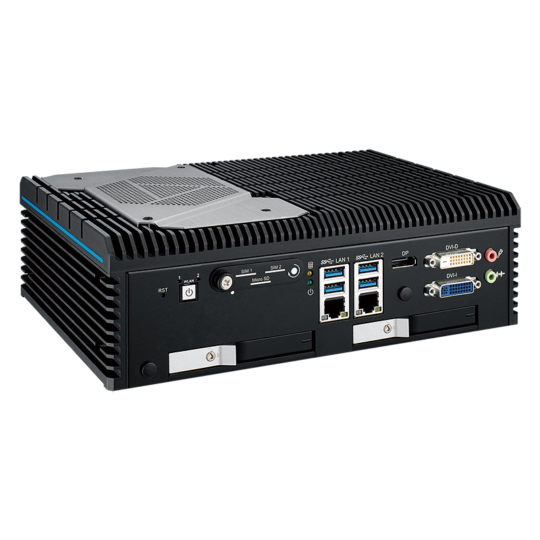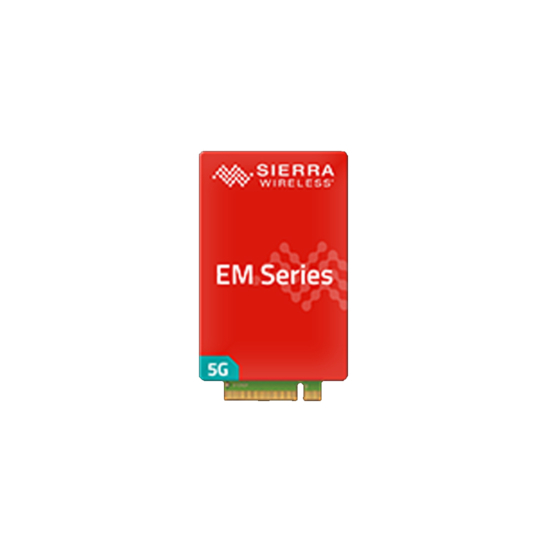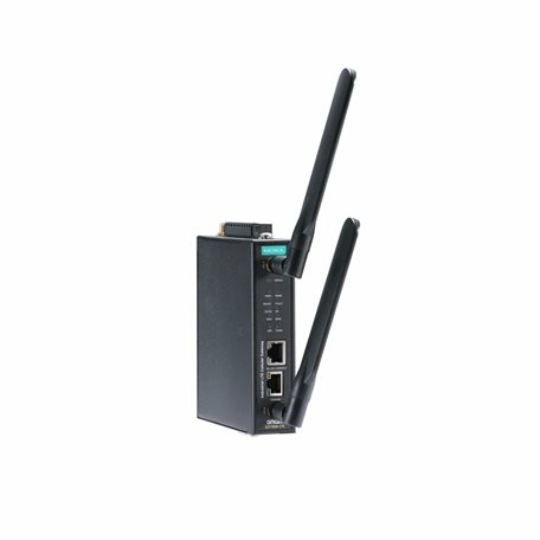Adopting 5G at the Edge in IIoT Applications
Maintaining connectivity can be challenging in industrial and IoT applications. In mobile and remote locations, Wi-Fi is often not practical, and in industrial locations, machine vibration can interfere with short-range signals. So it’s no accident that embedded computer and industrial PC vendors have come to understand that Wi-Fi cannot be the only connectivity option for their devices and must turn to alternatives such as cellular connectivity.
5G cellular networks offer high security, high-speed, low latency communication and is the fifth-generation mobile network that began rolling out globally in late 2019. This latest generation of network is becoming the new global standard for mobile wireless networks after its predecessors whilst offering fallback connectivity to the likes of 3G and 4G. With 5G technology, a new type of network will make it possible to virtually connect people, objects, machines and devices. This new technology has the potential to support millions of devices at ultra-fast speeds and has the potential to take edge computing across a wide range of industries to a new level.
“We serve customers in a variety of mission-critical industries where uninterrupted, high bandwidth data access is imperative. 5G is beginning to rollout in the market for industrial computing and brings with it some great advantages for users of our hardware. The higher bandwidth of 5G is ideal for high-resolution and high-frame-rate video capture and processing, as well as for newer sensors like LiDAR.” Andrew Whitehouse, CEO at Things Embedded.
At Things Embedded we design, build and support industrial board level and embedded box computer solutions for IoT applications with cellular communication technology onboard. The purpose of this article is to tell you about the benefits of 5G in industrial computing and key considerations for adopting the technology in your next edge computer. While this sounds like an easy feature to enable, certification with regulatory bodies and meeting rugged specifications add complexity and we’re here to help.
Engineering Embedded Systems with 5G Technology
Benefits of 5G in Industrial IoT Applications. Evolution or Revolution?
Faster Network Speeds
With every upgrade in communication standards, an increase in throughput or network speed is expected. Even in its infancy 5G is already roughly ten times faster than 4G, and as it is further adopted and rolled out by the major ISPs, expectation is that speeds will reach nearer 10Gps. This boost in speed means more than just an increase in performance for systems already using cellular connections — it is set to transform the way Industrial IoT applications are designed and operated. With the reduced time 5G cellular connections take to transmit data to and from the cloud, along with the ease of integration and flexibility it provides to multi-vendor systems, 5G is set to put cellular connectivity at the forefront of system integrators’ connectivity considerations.
Lower Latency
Latency is the measure of the amount of time that elapses between sending an instruction over a network, and its actual execution. With initial latency expectations for 5G set at around one millisecond, which is roughly fifty times more responsive than 4G, Industrial IoT and Industry 4.0 is set to capitalise quickly on these improvements, especially in applications needing near-real-time feedback. For example, remote security systems will be able to stream 4K video over cellular connection with just a one millisecond delay, allowing operators to make decisions in real-time and take more timely action. Augmented Reality (AR) is also an area that could benefit from the reduced latency of 5G cellular connectivity. Long been limited by 4G’s fifty millisecond latency, 5G could open the door to using AR for remote surgery, robotics, and even military operations or scenarios requiring a human touch, but deemed too dangerous for direct human interaction.
Enhanced Provisioning for Devices
If you’ve ever been to a big sporting event or a large exhibition, you have likely struggled with connectivity, even through your cellular connection. This is nothing to do with bandwidth – it is due to the sheer number of connected devices within a small radius of the area you are in. There is an actual limit on the number of devices that can access a 4G connection at any one time — 4000 devices per square kilometre — which is a limitation of the technology, not something imposed by an ISP. 5G also has a limit, but this is now one million connected devices per square kilometre — a 25000% increase over 4G, meaning load spikes could be a thing of the past at major events and gatherings.
Outside of sporting events and exhibitions, system integrators designing networks for hotels and high-rise buildings could also benefit from adopting 5G. The Royal National Hotel in London has over 1600 rooms and over 3,000 sqm of meeting space in over 30 different rooms. Add 2 people in each room, plus conferencing, plus restaurants and other activities, and that 4000-connection limit is soon reached. And that’s just for the hotel alone – the limit is 4000 per square kilometre, remember. 5G removes this issue completely, while also lowering costs through less networking infrastructure requirements. Maintenance needs are also lessened compared to that of a traditional network with critical security considerations and multiple access points.
Introducing Network Slicing
Network Slicing is a new feature with 5G, which acts as a means of separating parts of the network into zones, which are self-contained and independently secured. Essentially, depending on the service to which your device is subscribed, it will assign a specific level of network capabilities. Speed and latency can be controlled between zones, allowing network administrators of 5G Industrial IoT systems to take bandwidth from non-critical systems and redistribute it to more data-intensive areas of the network.
For instance, Industrial IoT infrastructure systems like fleet management could be deemed as non-critical. With data generally being limited to location and driver behaviour details, being transmitted from vehicles to control centres on an interval basis, fleet management systems don’t require a lot of bandwidth, network speed, nor a low ping. On the flip-side, companies who adopt autonomous driving systems which use cellular data to get hyper-accurate location details and vehicle telemetry, would require a faster, more reliable connection. ISPs can allocate this boost in connectivity, at a price of course.
This Network Slicing technology will ensure that critical systems remain the priority, and networks don’t get overloaded with devices that could compromise the flow of data between these critical IoT devices.
Lower Power Consumption
A study in 2020 by Nokia and Telefonica showed that 5G networks were, on average, up to 90% more energy-efficient than legacy networks. With the continued pressure for factories to reduce their carbon footprint and improve energy-efficiency, this improvement in data transmitted per watt will be key in minimising carbon emissions as the 5G network grows. Furthermore, this reduction in power consumption will enable the implementation of huge numbers of low powered endpoints leveraging 5G’s future capability to support NB-IoT, enabling M2M in many new applications.
Factors to Consider When Choosing or Upgrading an Edge Gateway with 5G Technology
Choosing an Industrial Edge Gateway with 5G Support
5G enabled computers are now becoming more widely available in the industrial market for which our devices are intended. When selecting an edge computer you may note the device being cellular ready, which may be limited to 4G. Chances are if the device is limited to 4G then it only has mPCIe on board and won’t easily accommodate the 5G modules new to the market.
The first generation of 5G modules are designed for M.2 Key B Sockets (3042/3052), this defines the pin-out along with the dimensions of the card. It is critical to select a 5G card which communicates with correct key but also adopts the width and length of card being accepted. If for example your system only accepts 3052 card lengths then a 3042 cellular card won’t support being installed in a secure fashion, a critical factor when requiring a rugged PC designed for handling shock and vibration.
Upgrading Legacy 4G Gateways Limited by mPCIe Expansion with 5G Modem Adapters
If you’re looking to implement or upgrade to 5G and your current system is limited by mPCIe, or you cannot find a market certified PC with M.2 3042/3052 slots on board, then 5G modem adapters can be considered. Onboard jumpers included with the 5G modem adapters to activate or deactivate USB2/USB3 or PCIe data signal interface. This signal composition by default varies among industrial gateway manufacturers and should be validated with the modem and adapter looking to be adopted.
When using modem adapters with 5G cellular data card modules, always ensure compatibility for pin-out definitions, signal voltage level, and power output capabilities for your selected cellular module, the adapter and host board prior to using the adapters. It is recommended to test the first generation of 5G sub-6 modules in your current design before a mass rollout in the field.
Enhanced Coverage with Additional SIM Slots & SMA Ports
Different networks have different coverage areas. It’s not uncommon to be in a location where phones on network A have a signal while phones on network B don’t. Having two SIMs gives you an advantage over having just one. If you are using SIM cards from different network operators, you can easily compare the signal strengths for both networks. If you happen to be somewhere where the coverage of your secondary SIM is better than the coverage of your primary SIM, you can seamlessly switch from one SIM to the other and connect to the stronger signal.
The system mainboard on your selected industrial computing platform may already be equipped with one or more SIM slots on board. Features you may wish to look out for is the accessibility of the SIM slots on board, can they be easily interchanged?
Some cellular modules also have embedded SIM slots to simplify and add flexibility to IoT deployments. This can increase the number of networks which your industrial computer can connect to and also help with cutting costs and reducing time to market with network certified deployments.
With more modems and SIM slots on board you will require more antennas for the edge device to connect to the networks. SMA ports are a common coaxial RF connector which adopt the chosen antenna and are a common integration among edge gateways. At Things Embedded we have customised both standard fanless gateways and waterproof gateways with additional SMA ports for additional network breakouts.
Is the 5G Cellular Card Industrial-Grade?
Looking for an Industrial Computer with 5G Connectivity?
Tell us about your application and a member of our team will get right back to you.



